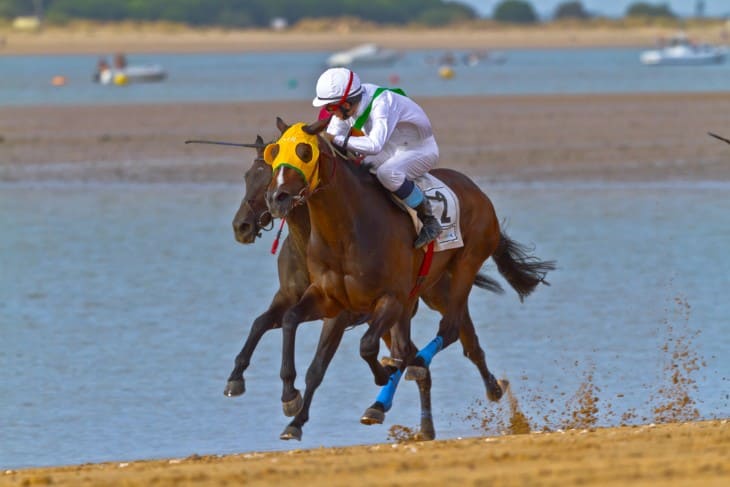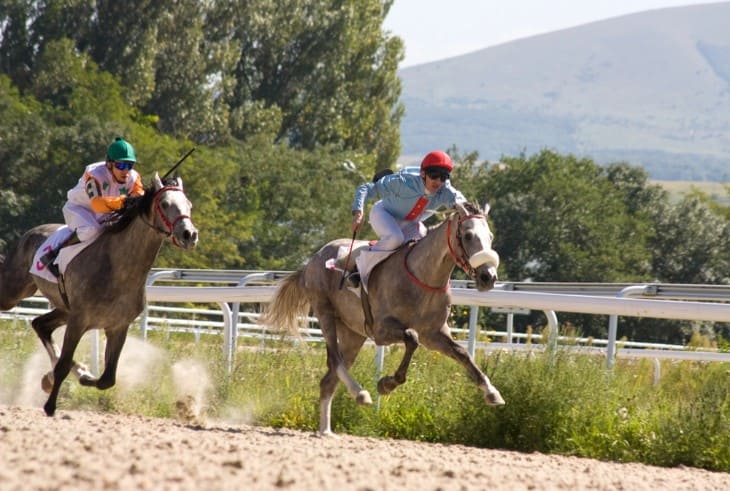Early History of the Champion Hurdle
Inaugurated in 1927, the race was established at the Cheltenham Festival, a location synonymous with steeplechase racing. The inaugural race set a precedent for quality and excitement, qualities that have become synonymous with the event. Initially, the Champion Hurdle was not recognised as a significant race, but it gradually gained prestige, largely due to its challenging nature and the calibre of participating horses and jockeys.
Over the decades, the Champion Hurdle has evolved, reflecting changes in both society and the sport of horse racing. During its early years, the race was dominated by British and Irish horses, a trend that has largely continued to this day. The 1930s and 1940s saw the race gain prominence, as equine stars began to etch their names in the annals of hurdle racing history. The Champion Hurdle became a test not only of speed but also of agility and endurance, drawing in larger crowds and increasing its stature within the National Hunt racing circuit.
Iconic Hurdles and Courses
At the heart of the Champion Hurdle's allure are the iconic hurdles and courses that comprise the Cheltenham Racecourse. The course, known for its undulating terrain and challenging fences, offers a unique test to both horse and rider. The hurdles used in the Champion Hurdle are smaller and more flexible than those found in steeplechase racing, requiring a different style of jumping and strategy.
- The Old Course: The Champion Hurdle is run on the Old Course at Cheltenham, famous for its tight turns and testing downhill sections. This course demands exceptional agility and control from the competing horses.
- The Final Straight: Often the defining stretch of the race, the final straight at Cheltenham is where many historic moments have unfolded. It's a test of stamina and speed, where races can be won or lost in dramatic fashion.
- Prestbury Park: The wider setting of the Cheltenham Racecourse, Prestbury Park, with its picturesque backdrop, adds to the atmosphere and challenge. The course's natural contours and varying ground conditions play a significant role in determining the outcome of the race.
The combination of these elements ensures that each Champion Hurdle is a unique event, testing the mettle of the finest hurdlers in the sport. The course has witnessed numerous legendary performances and has become a revered site in National Hunt racing.
![]()
Profile of Champion Horses
The Champion Hurdle has been graced by some of the most remarkable horses in the history of National Hunt racing, each leaving an indelible mark on the sport. These equine athletes are celebrated not just for their speed and agility, but also for their courage and resilience. A standout example is Istabraq, a three-time winner of the Champion Hurdle, revered for his exceptional hurdling ability and racing intelligence. Another notable name is Sea Pigeon, famous for his impressive dual victories in the early 1980s, showcasing both speed and stamina.
Champion horses in the event often become household names, with their careers closely followed by enthusiasts and the general public alike. Some of the key attributes of these champion horses include:
- Endurance: Essential for navigating the challenging Cheltenham course, endurance enables horses to maintain their pace throughout the race.
- Agility: A crucial trait for clearing hurdles efficiently without losing speed.
- Speed: Paramount in the final stretch of the race, where many contests are decisively won or lost.
- Temperament: A calm and focused demeanor is vital for coping with the high-pressure environment of the Champion Hurdle.
Legendary Jockeys of the Champion Hurdle
The history of the Champion Hurdle is not only shaped by the horses but also by the legendary jockeys who have guided them to victory. These jockeys, with their skill, bravery, and tactical acumen, play a pivotal role in the outcome of the race. One such figure is Ruby Walsh, renowned for his record-breaking number of wins in the Champion Hurdle. His intuitive understanding of the horses and the course at Cheltenham has cemented his status as a National Hunt racing legend. Another notable jockey is Tony McCoy, admired for his relentless determination and exceptional skill, which have seen him triumph in numerous hurdle races.
The success of a jockey in the Champion Hurdle requires a deep synergy with the horse, an understanding of the course, and the ability to make split-second decisions under immense pressure. This combination of skills and qualities includes:
- Tactical Intelligence: Knowing when to push forward or hold back is crucial for navigating the field and hurdles effectively.
- Physical Fitness: A jockey must maintain peak physical condition to endure the rigours of hurdle racing.
- Risk Management: Assessing and reacting to the risks during the race, while maintaining the safety of both horse and rider.
- Emotional Resilience: The ability to stay focused and composed, especially in high-pressure situations.
Significant Races and Records
The Champion Hurdle has been the stage for numerous significant races and records, each contributing to the rich tapestry of its history. Memorable moments include the aforementioned triumphs of horses like Istabraq and Sea Pigeon, as well as historic winning streaks that have set new benchmarks in hurdle racing. The race has also seen its share of dramatic finishes, where victory was clinched in the final moments, adding to the suspense and excitement of the event.
Key records and milestones in the Champion Hurdle include:
- Fastest Winning Time: This record highlights the incredible speed and athleticism of the winning horse.
- Most Wins by a Horse: A testament to the enduring quality and consistency of the top-performing horses.
- Most Wins by a Jockey: Reflecting the skill and experience of the jockeys who have mastered the Champion Hurdle.
- Winning Margins: These records illustrate the competitive nature of the race, with some victories achieved by mere fractions of a second.
Each of these records represents a remarkable achievement in the world of National Hunt racing, contributing to the prestige and allure of the Champion Hurdle at the Cheltenham Festival.
Technology has had a transformative effect on the Champion Hurdle, influencing various aspects of the sport, from training methods to spectator engagement. Advances in veterinary medicine and nutrition have significantly improved the health and performance of the horses. Sophisticated training equipment, such as high-speed treadmills and swimming pools, are now commonly used to enhance fitness and recovery. Additionally, technological innovations have also improved the safety of both horses and riders, with better-designed hurdles and more effective protective gear.
In terms of audience engagement, technology has broadened the reach of the Champion Hurdle. Live streaming services and social media platforms allow fans worldwide to watch and interact with the event, bringing a global audience to what was once a predominantly British and Irish affair. Additionally, innovations in data analysis and broadcasting, such as drone footage and advanced race analytics, have enriched the viewing experience, providing deeper insights into the strategies and performance of the competitors.

Betting Strategies and Statistics
Betting on the Champion Hurdle is an integral part of the race's tradition, adding an extra layer of excitement for many fans. Successful betting requires an understanding of various statistics and form guides that indicate the potential performance of horses and jockeys. Enthusiasts often scrutinise past performances, track conditions, and even bloodlines to make informed bets. Key statistics considered by punters include:
- Win and Place Percentages: Indicative of a horse's consistency and reliability.
- Performance on Similar Tracks: How horses have fared on courses with similar characteristics to Cheltenham.
- Recent Form: The performance of the horse and jockey in the lead-up to the Champion Hurdle.
- Historical Trends: Patterns or trends in past editions of the race that may influence betting decisions.
It's important to note that while statistics can guide betting decisions, horse racing always involves elements of unpredictability and risk. Seasoned bettors often blend statistical analysis with their own intuition and experience.
Fan Culture and Community Engagement
The Champion Hurdle is not just a race; it's a cultural event that brings together a diverse community of horse racing enthusiasts. The fan culture surrounding the event is vibrant and passionate, with people from all walks of life sharing a common love for the sport. Racegoers often dress in traditional attire, adding to the festive atmosphere of the event. The festival is also a social occasion, where fans meet, share stories, and celebrate the heritage of National Hunt racing.
Community engagement extends beyond the racecourse. Clubs and online forums dedicated to the Champion Hurdle and National Hunt racing in general provide platforms for fans to connect and discuss their shared interest. Charities and educational programs associated with horse racing also play a role, fostering a sense of community responsibility and involvement. Through these various channels, the Champion Hurdle has fostered a unique and enduring community, united by a love for the sport and its rich history.
Conclusion
In summary, the Champion Hurdle is a pivotal event in the National Hunt racing calendar, embodying a rich blend of history, skill, and excitement. From the early days of its inception to the modern era of advanced technology and global engagement, the race has evolved while maintaining its core essence. The Champion Hurdle stands as a testament to the enduring appeal of horse racing, reflecting both the triumphs and challenges inherent in the sport.








